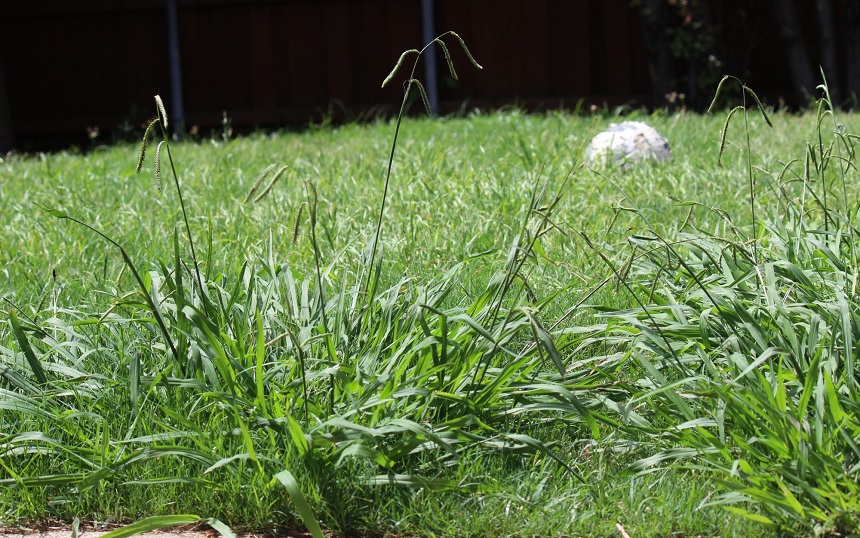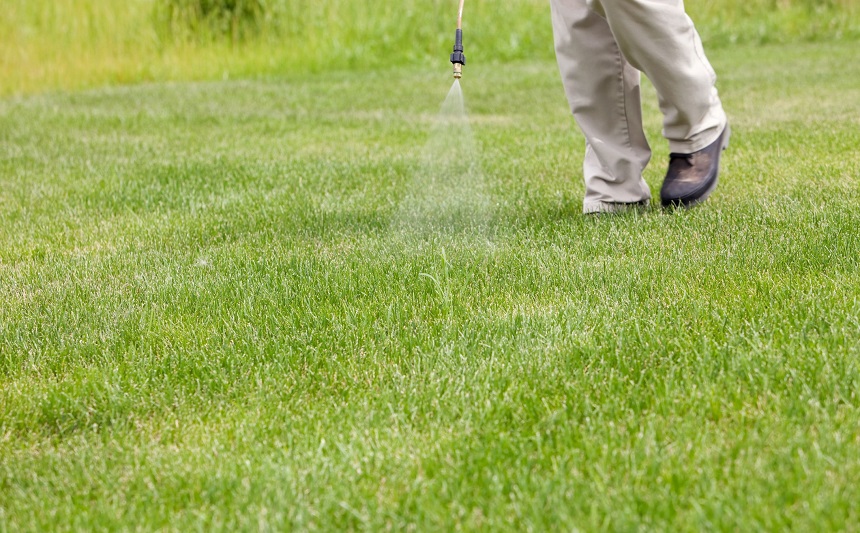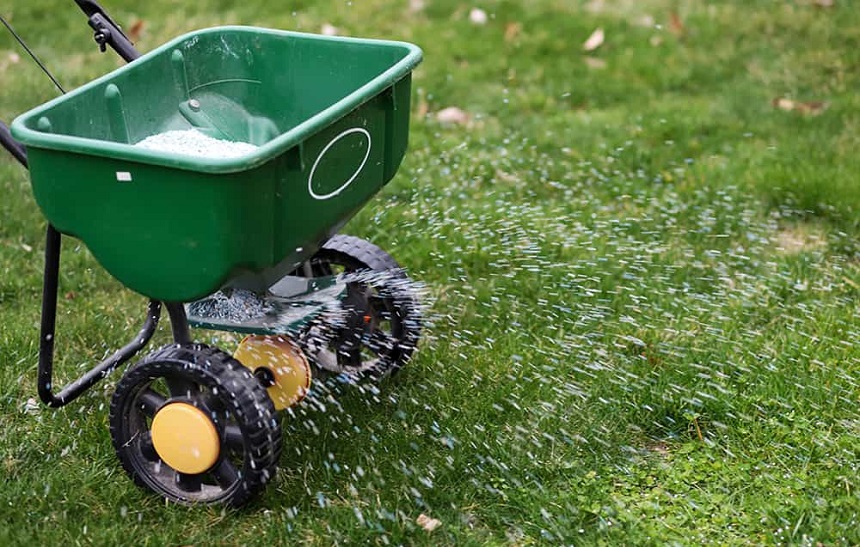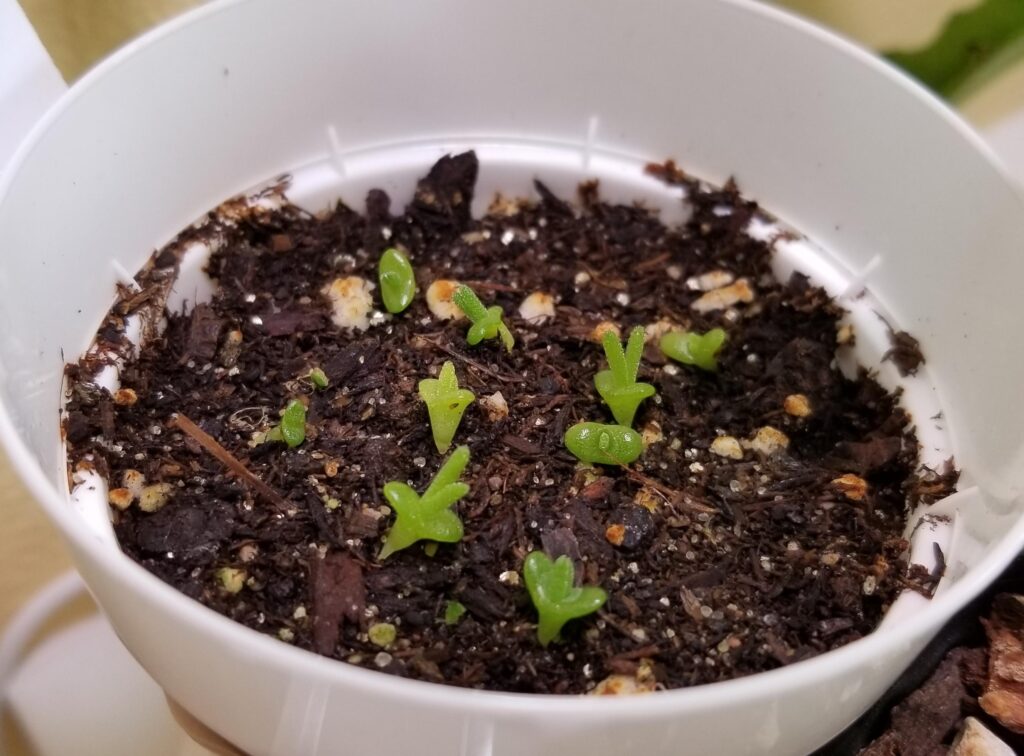
There’s nothing more satisfying for a gardener than the perfect lawn, free of weeds! And, if you’re the greenkeeper of the local golf course, the last thing you want to see growing on your immaculate greens are clumps of pesky weeds. But, there’s always the risk of something such as crabgrass taking over your lawn. One or two blades of this annual invasive pest may seem innocuous, but if not kept under control, crabgrass will quickly invade your landscaping. If this is your problem, you may be wondering how to get rid of crabgrass. There are a few options. You can arm yourself with weed killers and declare war on the unwanted plant. Or, attempt to remove it by hand, a slow and tedious task. One last option is calling in the lawn experts and getting their advice. Where do you begin, and which method really is the best option?

When noticing that an unsightly plant is starting to creep across your turf, identify what it is. Crabgrass has broad, coarse, yellowish blades. This invasive weed Trusted Source Invasive Grasses, Vegetation, and Weeds | U.S. Geological Survey Invasive plants (e.g. leafy spurge, cheatgrass, brome, and buffelgrass) have dramatic impacts on Western landscapes through increased fire vulnerability, changes in ecosystem structure and diminished livestock grazing value. USGS researchers are working with DOI land managers, and federal and state partners to find solutions to this growing problem. www.usgs.gov is commonly found in areas of compacted soil where the grass has weakened and become thin. Crabgrass germinates at the beginning of spring and grows in dense bunches, resembling a crab’s arms spreading out over your immaculate lawn. One mother plant can produce thousands of seeds, and once it’s settled in your turf, it’s difficult to completely eradicate. Coming up with a weed-killing strategy will help keep crabgrass under control and out of sight. Controlling this annual pest is possible with a plan in place and being prepared.
With the right strategy and planning in place, you can start to prepare for your onslaught on this pesky lawn weed. Knowing which weed control you approach going to use will help you prepare for the task. Having the proper tools on hand is key to successfully tackling problem weeds such as crabgrass. If you’ve decided to use the chemical approach with herbicides, here’s a list of tools you need to have to do the job:
Herbicide safety Trusted Source Herbicide safety | Agriculture and Food Herbicides can be used safely, provided appropriate precautions are taken as required by the chemical label or as described in safety data sheets (SDS). www.agric.wa.gov.au is essential to protect yourself against the harmful effects of using weed killers. Don’t be tempted to tackle crabgrass without wearing safety glasses and gloves. Some gardeners go as far as wearing a face mask as well.
When planning your chemical warfare against crabgrass, you need to arm yourself with the right materials. These include:
Both liquid and granular-type herbicides formulated to kill invasive vegetation such as crabgrass work well. However, you’ll need to have a pump sprayer for liquid weed killers and a broadcast spreader if you opt for granular herbicides.

Using an effective crabgrass killer with the right chemical formulation designed to target this lawn enemy will make it easier to get rid of it. The right application of the weed killer is also essential if you want to succeed in getting a shot of crabgrass from your turf. Applying a selective pre-emergent herbicide in spring, before the crabgrass seeds start to germinate, helps to prevent the growth of this pesky problem. The herbicide sits on top of the soil, and as the seeds sprout, they absorb the chemical and die before turning into full-fledged plants.
Herbicide applications normally last for up to 50 days before losing their effectiveness. This means dormant crabgrass seeds can still sprout later in the summer season. If this happens, re-application of the herbicide has to take place. Use the following steps to give you a systematic approach to killing crabgrass with weed killers.
With the arrival of spring, garden tasks suddenly double up, including preparing your reel mower for a season of keeping your turfgrass neat! Understanding your lawn growth will guide you as to when to apply the first application of pre-emergent weed killer. Lawn professionals recommend you wait until after your second spring mowing before spraying or spreading weed killer for crabgrass eradication. When looking for the best weed killers for lawns, make sure it’s suitable for getting rid of tough invasive grasses such as crabgrass.
Crabgrass is a virulent pest that spreads easily from other areas, including your neighbor’s backyard. When applying pre-emergence herbicide granules using your lawn or broadcast spreader, don’t only focus on your lawn. Remember to cover areas such as alongside your neighbor’s fence, down the driveway, and along walkways. Crabgrass seeds settle just about anywhere where there’s compressed soil.

Timing is crucial here as you want to catch the first rains for soaking the fertilizer and crabgrass preventer solution into the soil. The right soil temperature is also important for the herbicide to work effectively. The soil should be around 52⁰ F for optimal performance of the weed killer. The fertilizer and preventer combination encourages healthy turf growth while preventing crabgrass seeds from sprouting. Stronger, thicker turfgrass also stops crabgrass seedlings from taking up residence on your lawn!
The key active ingredients in the preventer for it to work effectively against crabgrass are:
Always read the ingredients label on the packaging to check if the product is suitable for crabgrass prevention. If you’re unsure, speak to your local state cooperative extension Trusted Source Dimension (dithiopyr) | NC State Extension Publications Preemergence control of crabgrasses, goosegrass, other summer annual grasses, annual bluegrass, lespedeza, bittercress, chickweed, oxalis, henbit and parsley-piert. Higher rates are needed for goosegrass and broadleaf weeds. Partial control of spurge, longstalked phyllanthus, and rice flat sedge. Postemergence control of smooth and large crabgrass if applied before tillering. content.ces.ncsu.edu , who’ll be able to advise on the right products for crabgrass elimination in your area.
Always be on the lookout for crabgrass sprouting on your lawn, even if you’ve applied herbicide. The earlier you catch it, the quicker you can remove it and prevent it from creeping across your turf. As soon as you spot it, pull it out by hand. Young plants come out relatively easily and leave a small hole for more desirable grasses to take over.
Young crabgrass can be hard to identify, fooling you into believing your turfgrass is thriving! Look out for seedlings with two to three sets of leaves.
Avoid pulling out young crabgrass seedlings with open seed heads, as you’ll end up spreading the seeds. Rather, keep an eye out for immature plants with closed seed heads on slender green stalks folded up against the leaves. You can pull these plants out carefully, although they can be quite difficult to get out of the ground. Dispose of crabgrass responsibly by taking it to an approved disposal site Trusted Source A Guide to Removal and Disposal of Noxious Weeds in Minnesota | Minnesota Department of Agriculture Removal of noxious weeds from the habitats they have invaded results in large amounts of plant material that landowners and managers often feel the need to dispose of. The following information is intended to educate landowners and land managers regarding what can and cannot be done legally in Minnesota regarding the removal of noxious weeds on their properties. www.mda.state.mn.us or leave to degrade naturally on your property.

If your initial application of pre-emergence herbicide didn’t completely prevent crabgrass from sprouting, you could apply post-emergence weed killer. Using your garden pump sprayer, spray a liquid post-emergence herbicide on patches of crabgrass growing on your lawn. Take note of the following:
You can continue to pull out crabgrass by hand as they crop up on your lawn. However, pulling out large patches of immature crabgrass often results in clumps of turfgrass being disturbed and removed at the same time! Well-established crabgrass has deep roots, and trying to yank them out often means taking out the surrounding, more desirable grasses. You can opt to treat immature patches of crabgrass that have become embedded with your turfgrass with a light spraying of post-emergence herbicide throughout the summer season.
Besides weed killers, crabgrass’s number one enemy is healthy turf! Dense, strong lawn grass grows tightly together, creating a canopy of shade. This prevents the crabgrass from germinating or finding a spot among the blades of grass. The following tips will ensure you have a healthy lawn:
Crabgrass thrives in hot areas. Hotspot areas in your garden include the driveway, pavements, and south-facing spots. These areas absorb heat during the hot summer months, making them the ideal place for crabgrass to take up residence! Identify spots in your yard where this pest can take hold and apply double doses of herbicide to keep them under control. This can be done by going over the hotspots and applying a dose of weed killer before tackling the main lawn. Once this has been done, return to the hotspots and make a second application.
If you’ve not succeeded in conquering crabgrass during the summer months and you have more weeds than lawn grass, you’ll need to start from the beginning by exposing bare soil. This can be done by killing any desirable grass with a nonselective herbicide during the fall season. Reseeding can be done once the effects of the herbicide have worn off. Always check the product label for this information before attempting to replant your new lawn. Before replanting, check the moisture depth of the soil by pushing in a spade to get a good view of how damp the ground is. If it’s wet enough, you can start preparing for reseeding the lawn. Rake away all dead grass and weeds to expose the soil.
Preparing the exposed soil includes making furrows for the seeds to have a better chance of germinating in spring. Use a garden spade to create furrows in the dirt. Each furrow should be about a quarter-inch deep and two inches apart. It’s far easier to make the furrows while the soil is moist, although it shouldn’t be soddened with water. While this is time-consuming work, especially if you’re replanting a large space, proper preparation is essential for the growth of a healthy lawn.
Using a lawn or broadcast spreader, you can now start to spread the turfgrass seeds. Once they’ve been dispersed, use the back end of the garden rake to push the seeds into the furrows. Pressing the seeds firmly into the furrows ensures they make good contact with the damp soil while providing them with a sheltered environment. Once the seeds have been planted firmly into the furrows, take care of them by keeping them moist until they start to germinate and grow. When it has reached a height of approximately four inches, you can give it its first mowing. Never apply crabgrass preventer on freshly grown grass as it will kill it.
While using pre-and post-emergence herbicides is the easiest and most effective method of ridding pesky weeds and invasive grasses, you may decide against the chemical approach. Chemical-free methods such as hand weeding do work well, and it’s easy to pull small seedlings out when the soil is moist. Another option is to use a corn gluten meal. This corn byproduct is often used to eradicate broadleaf pests such as dandelions and crabgrass. It works by releasing a protein that halts the root growth in the seedlings, causing the weed to eventually die. Some of the best organic weed killers on the market are formulated with this corn byproduct. Heavy applications are required to keep crabgrass under control.
It’s possible to keep your status as the best greenkeeper or gardener in your local area by using these steps to keep crabgrass out of your turf! Weed killers, also known as pre-emergence or post-emergence herbicides, work fast and effectively against problem plants such as crabgrass. Planning and preparing your weed-killing strategy is key to having all the right tools and materials on hand. There are alternatives to using chemical warfare as a solution to this weed when looking at how to get rid of crabgrass. You can opt to manually remove the pest or find a chemical-free product that’s less harmful to you, your family, and your pets. Whatever approach you pick for getting rid of crabgrass, make sure it works for you so you can still enjoy the benefits of having a beautiful weed-free lawn.





